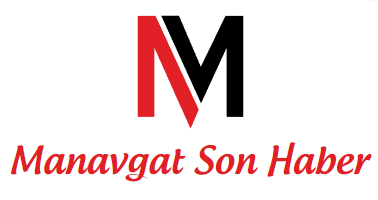

Yeni bir çalışma, evrenin 26,7 milyar yaşında olabileceğini öne sürüyor, bu da yaygın olarak kabul edilen 13,7 milyar yıllık yaşının iki katı. Zwicky’nin yorgun ışık teorisini ve gelişen Dirac eşleşme sabitlerini içeren yeni model, Büyük Patlama’dan sadece 300 milyon yıl sonra oluşan genç, olgun galaksilerin varlığını açıklayabilir ve kozmolojik sabitin gözden geçirilmiş bir yorumunu önerebilir.
Yeni bir çalışma, evrenin 26,7 milyar yaşında olabileceğini öne sürüyor ve Lambda-CDM uyum modeline dayanan yaygın olarak kabul edilen 13,7 milyar yıllık tahmine meydan okuyor.
Geçerli kozmolojik modele meydan okuyan ve sözde “imkansız erken galaksi sorununa” yeni bir ışık tutan yeni bir araştırmaya göre, evrenimiz mevcut tahminlerin iki katı daha yaşlı olabilir.
Ottawa Üniversitesi Bilim Okulu’nda fizik profesörü olan yazar Rajendra Gupta diyor.

“Yeni tasarladığımız modelimiz, galaksi oluşum süresini birkaç milyar yıl uzatarak, evreni daha önce tahmin edildiği gibi 13,7 değil, 26,7 milyar yaşında yapıyor.” Rajendra Gupta – Ottawa Üniversitesi Fen Fakültesi’nde Fizik Doçenti. Kredi bilgileri: Ottawa Üniversitesi
Astronomlar ve fizikçiler yıllardır evrenimizin yaşını o zamandan bu yana geçen süreyi ölçerek hesaplıyorlar.[{” attribute=””>Big Bang and by studying the oldest stars based on the redshift of light coming from distant galaxies. In 2021, thanks to new techniques and advances in technology, the age of our universe was thus estimated at 13.797 billion years using the Lambda-CDM concordance model.
However, many scientists have been puzzled by the existence of stars like the Methuselah that appear to be older than the estimated age of our universe and by the discovery of early galaxies in an advanced state of evolution made possible by the James Webb Space Telescope. These galaxies, existing a mere 300 million years or so after the Big Bang, appear to have a level of maturity and mass typically associated with billions of years of cosmic evolution. Furthermore, they’re surprisingly small in size, adding another layer of mystery to the equation.
Zwicky’s tired light theory proposes that the redshift of light from distant galaxies is due to the gradual loss of energy by photons over vast cosmic distances. However, it was seen to conflict with observations. Yet Gupta found that “by allowing this theory to coexist with the expanding universe, it becomes possible to reinterpret the redshift as a hybrid phenomenon, rather than purely due to expansion.”
“Our newly-devised model stretches the galaxy formation time by several billion years, making the universe 26.7 billion years old, and not 13.7 as previously estimated.”
— Rajendra Gupta, Adjunct professor of physics in the Faculty of Science at the University of Ottawa
In addition to Zwicky’s tired light theory, Gupta introduces the idea of evolving “coupling constants,” as hypothesized by Paul Dirac. Coupling constants are fundamental physical constants that govern the interactions between particles. According to Dirac, these constants might have varied over time. By allowing them to evolve, the timeframe for the formation of early galaxies observed by the Webb telescope at high redshifts can be extended from a few hundred million years to several billion years. This provides a more feasible explanation for the advanced level of development and mass observed in these ancient galaxies.
Moreover, Gupta suggests that the traditional interpretation of the “cosmological constant,” which represents dark energy responsible for the accelerating expansion of the universe, needs revision. Instead, he proposes a constant that accounts for the evolution of the coupling constants. This modification in the cosmological model helps address the puzzle of small galaxy sizes observed in the early universe, allowing for more accurate observations.
On July 7, 2023, the study, “JWST early Universe observations and 𝚲CDM cosmology,” was published in the Monthly Notices of the Royal Astronomical Society (MNRAS) by Oxford University Press.
Reference: “JWST early Universe observations and ΛCDM cosmology” by R Gupta, 7 July 2023, Monthly Notices of the Royal Astronomical Society.
DOI: 10.1093/mnras/stad2032

“Analist. Tutkulu zombi gurusu. Twitter uygulayıcısı. İnternet fanatiği. Dost pastırma hayranı.”





More Stories
Bilim insanları dünyadaki en büyük demir cevheri yataklarında milyar yıllık bir sırrı keşfetti
Fosillere göre tarih öncesi deniz ineği, timsah ve köpekbalığı tarafından yenildi
Büyük bir bindirme fayı üzerine yapılan yeni araştırma, bir sonraki büyük depremin yakın olabileceğini gösteriyor